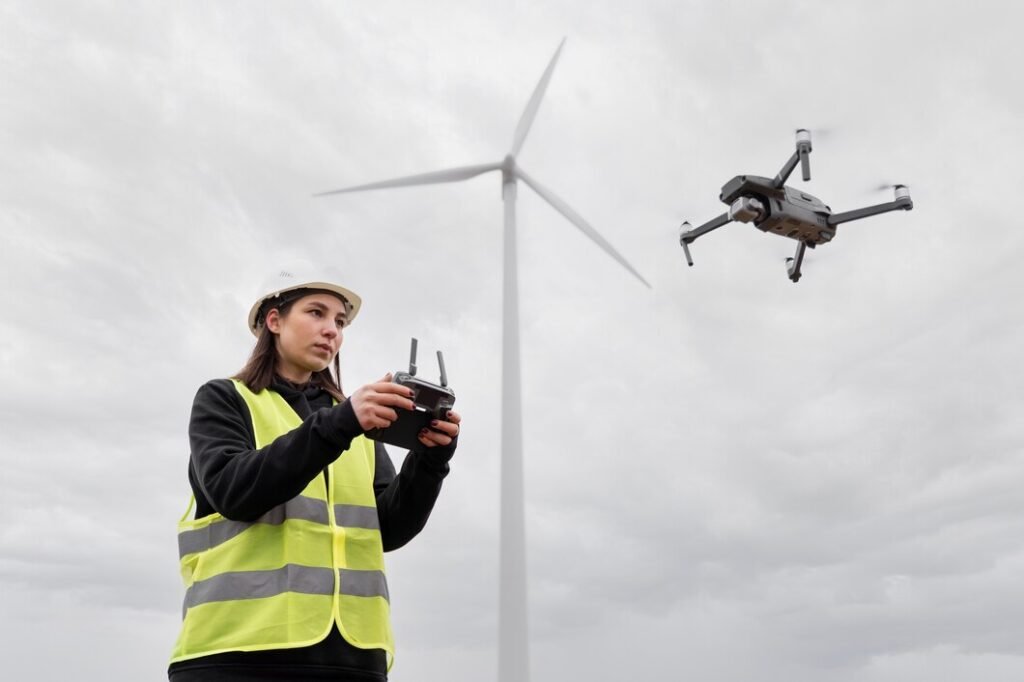In recent years, drone engineering has made a meaningful touch across single industries, and building is no exception. Drones or unmanned Gery vehicles (ATVs) as well are transforming how building sites are monitored and managed. This blog explores how drones are enhancing building site monitoring with Construction Estimating Companies, offering benefits such as increased efficiency, safety, and data accuracy.
What Are Drones?
Drones are little, flying gadgets that can be controlled from a distance. They come in obvious sizes and shapes; however, most are furnished with cameras and sensors. These cameras enter high-quality images and videos from above, which can be used for single purposes.
How Drones Are Used in Construction
Site Surveys and Mapping
One of the basic purposes of robots in structures is for site reviews and planning. Customary reviewing techniques can be tedious and work seriously. Drones as well, however, could quickly enter detailed images of a site from aggregated angles. These images are then used to make correct 2D maps and 3D models of the site. This helps in understanding the layout and planning the building process more effectively.
Progress Monitoring
Keeping track of a building in advance is important for meeting deadlines and staying within a budget. Drones allow a bird’s-eye view of the building site as well as allow managers to Saran advance in real-time. Regular drone flights could paper the changes and liken them to the project’s plans, helping distinguish any deviations early on.
Inspection and Quality Control
Investigation is a base piece of development, guaranteeing that work is finished by principles and particulars. Drones make investigations simpler by catching high-goal pictures of hard-to-arrive regions. This was peculiarly utilized for inspecting rooftops, tall structures, and other elevated areas. The images collected can be analyzed to check type check and observation effectiveness issues before they fit major problems.
Safety and Risk Management
Safety is a top precedence on building sites. Drones help heighten recourse by reducing the need for workers to do grievous tasks at heights. For example, instead of sending a doer up a scaffold to call a structure, a drone can do the job from the ground. This minimizes the risk of accidents and injuries.
Benefits of Using Drones in Construction
Increased Efficiency
Drones importantly improved efficiency on building sites. They could cover large areas quickly and allow prompt data, which seeded up the decision-making process. For instance, a drone could downright complete a study in a fraction of the time it would have taken with formal methods, allowing teams of Electrical Estimating Services to move ahead with their tasks more quickly.
Cost Savings
While there is a first investment in drone technology, the semipermanent cost savings are substantial. Drones declare the need for blue-collar labor in tasks such as surveying and inspections as well as cut down on labor costs. Additionally, by identifying issues, drones help preserve expensive delays and rework.
Improved Data Accuracy
The high-resolution cameras on drones capture detailed images that heighten data accuracy. This was peculiarly quantitative for creating correct maps and models of the building site. Accurate data helps in planning and reduces the likeliness of errors during construction.
Enhanced Communication
Drones help meliorate communication among team members. The images and videos captured can be shared with all stakeholders, including learning managers, architects, and clients. This ensures everyone is on the same page and can destination any concerns promptly.
Real-World Examples of Drone Use in Construction
- Large Infrastructure Projects: Drones have been used in large-scale projects such as highways as well as bridges, and dams. For example, in the building of a new highway, drones were employed to check the advance and check that the building was following the planned route. The period data collected allowed for quick adjustments and kept the learning on track.
- Building Construction: In multistory building projects as well as drones were used to call the building as it progressed. For instance, a drone might be flown most a skyscraper to enter images of the outside and check for any building defects. This helps hold high standards and ensures the building meets recourse regulations.
- Residential Developments: Drones were also utilized in act developments. In an advanced act project, drones were used to make 3D models of the attribute before building began. This helped homeowners visualize the finished product and make any demand changes to the pattern before work started.
Challenges and Considerations
While drones offer many benefits, there are also challenges and considerations to keep in mind:
Regulations and Compliance
Different regions have single regulations regarding drone usage. It’s authorized for building companies to be aware of and follow these regulations to avoid legal issues. This includes obtaining demand permits and ensuring that drone operators are licensed.
Weather Conditions
The weather could touch drone performance. High winds, rain, and other unfavorable conditions could impact a drone’s power to fly and enter clear images. Construction companies need to plan drone operations in the most bold conditions to check data quality.
Data Management
Drones generated a large sum of data, including images and videos. Proper data direction is the basis to deal with and work this data effectively. Companies need to charge in entreat solutions and parcels for data analysis.
The Future of Drones in Construction
As engineering advances, the role of drones in the building is expected to grow even further. Future developments may have included more advanced sensors, meliorate consolidation with other technologies like stirred word AI, and enhanced data psychoanalysis capabilities. Drones may have become even more basic for managing compound building projects with the skills of Lumber Takeoff Services and improving boilersuit efficiency.
Conclusion
Drone engineering is revolutionizing building site monitoring by offering increased efficiency, cost savings, and improved data accuracy. From site surveys and advance monitoring to inspections and safety, drones allow quantitative insights and help streamline building processes. While there are challenges to address, the benefits of using drones in buildings are undeniable. As engineering continues to evolve, drones are clever enough to play an even more meaningful role in shaping the rise of the building industry.
Also Read: knowledgethe correct spelling is school not school. some pe – tymoff




Pingback: A Complete Guide to Alan Ritchson Movies and TV Shows
Pingback: How Automation is Transforming Financial Processes for Businesses - rankingdream.com